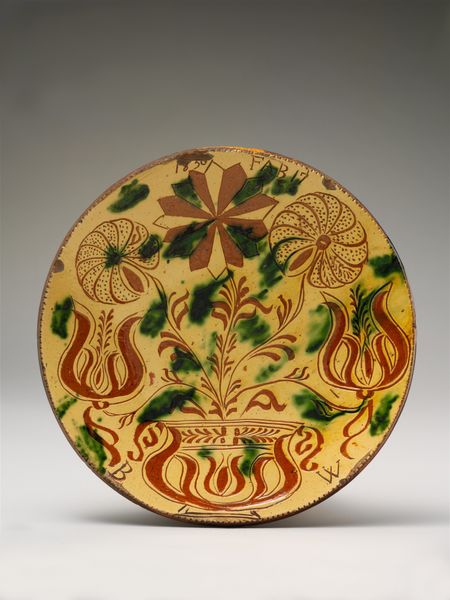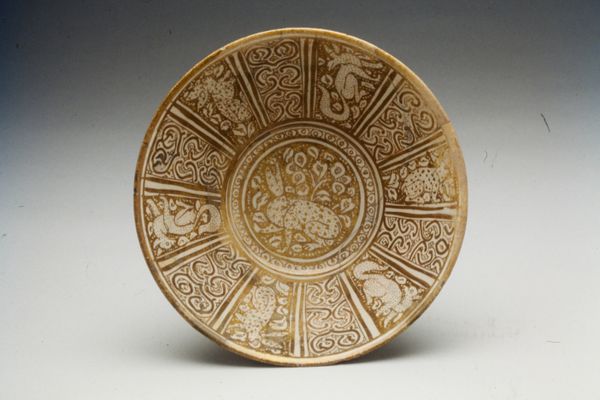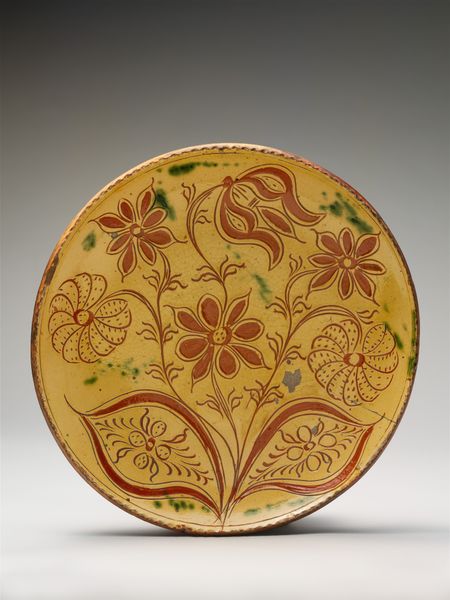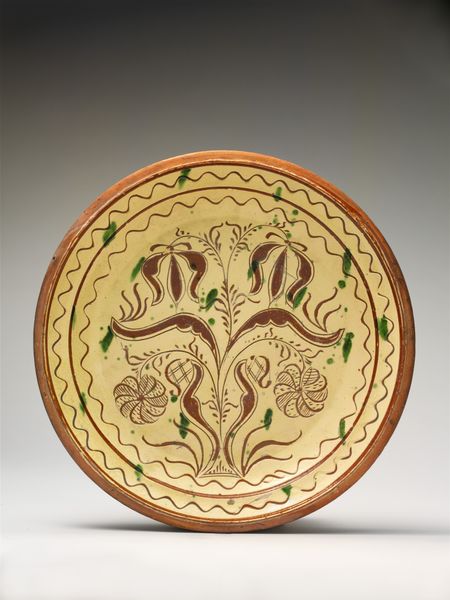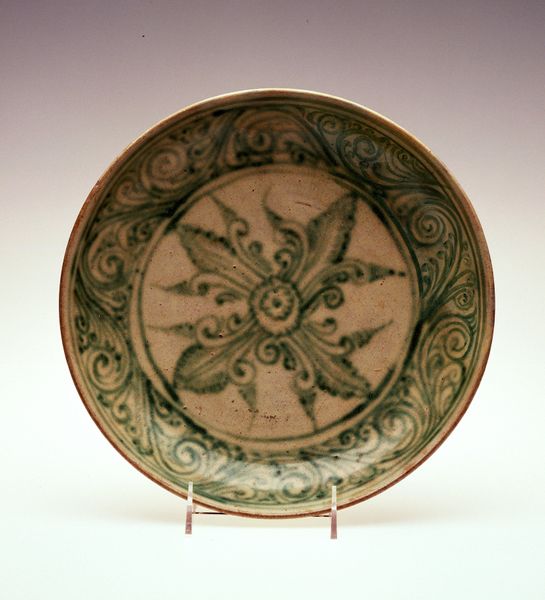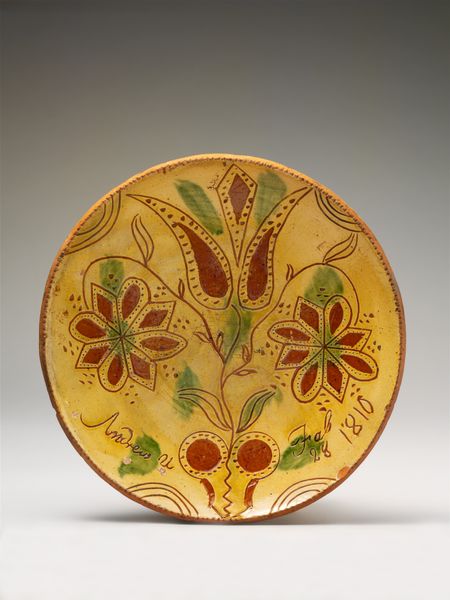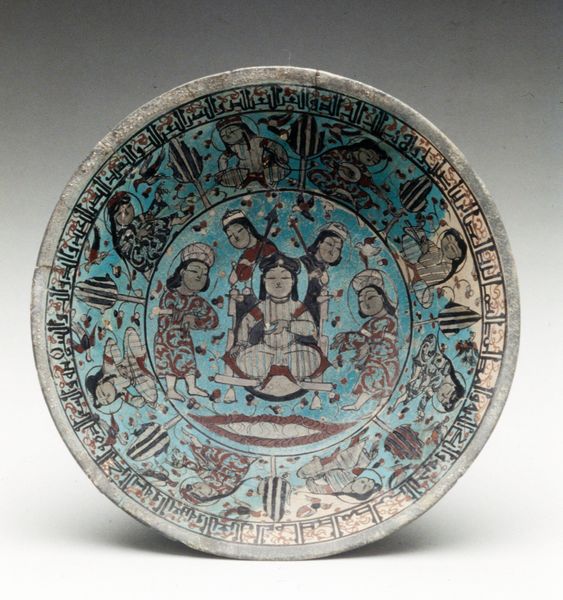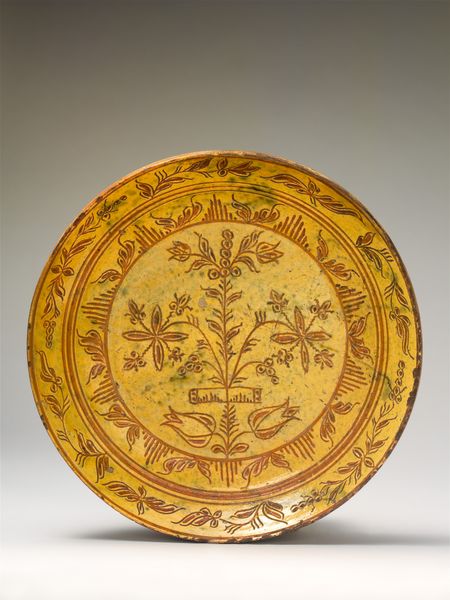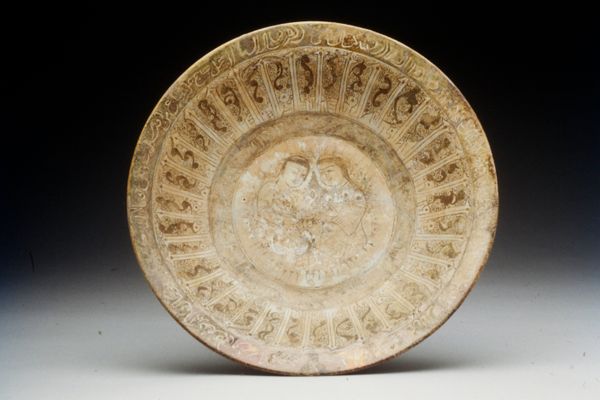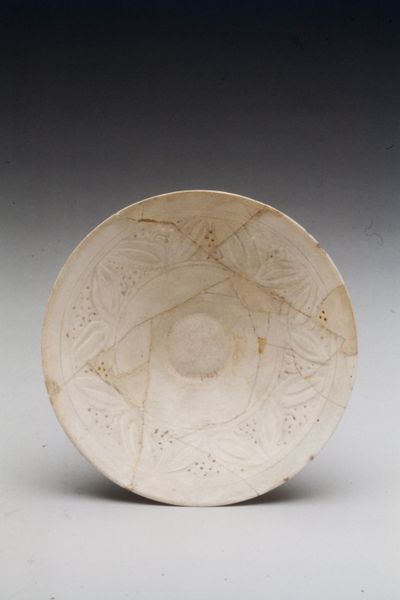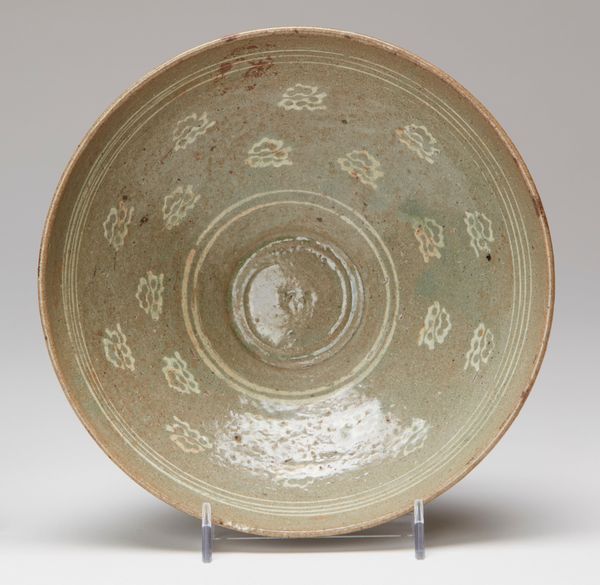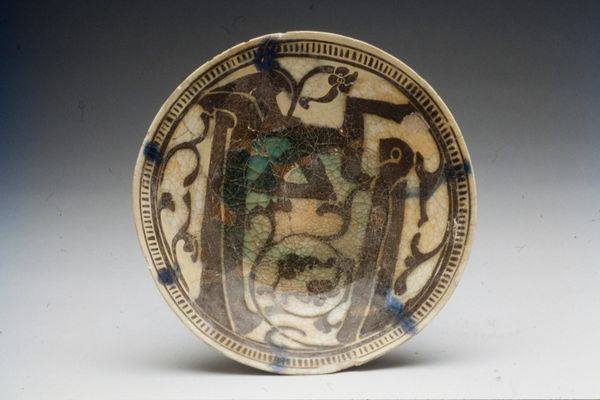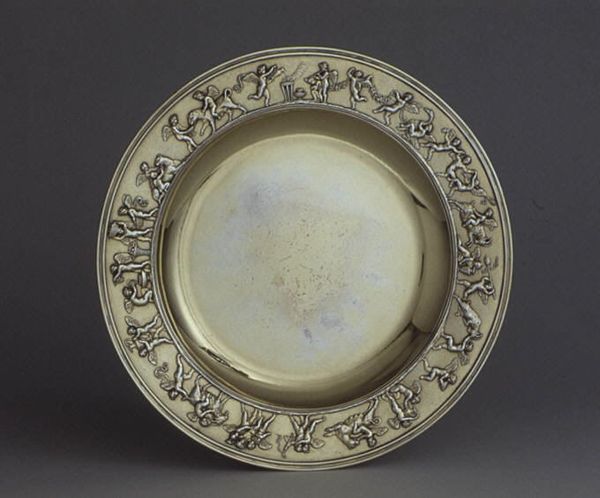
painting, ceramic, earthenware
#
painting
#
ceramic
#
flower
#
earthenware
#
stoneware
#
folk-art
#
romanticism
#
ceramic
#
united-states
#
decorative-art
Dimensions: Diam. 11 1/2 in. (29.2 cm)
Copyright: Public Domain
Editor: Take a look at this striking earthenware plate created in 1814. The artist, Heinrich Stofflet, decorated it with stylized floral motifs. It feels incredibly charming and… handmade. What story does it tell? Curator: Well, the folksy aesthetic immediately connects it to a broader narrative of early 19th-century American folk art. Pieces like this weren’t necessarily considered “high art,” but they played a crucial role in the everyday lives of ordinary people. Editor: So, this wasn't meant to be in a museum? Curator: Initially, no. But its presence here now prompts us to consider the journey of folk art into museum spaces. How did these functional, domestic objects come to be valued and displayed as cultural artifacts? Consider that Romanticism at the time prioritized "authenticity" and "simplicity", even within decorative objects. Editor: That makes me think about its social role… did owning something like this signify anything about a family’s status, maybe? Curator: Absolutely! It would indicate some level of economic stability, certainly. Furthermore, these objects, though often utilitarian, carried a decorative value and can be understood as cultural carriers of identity, pride, and community values within this Romantic, early-American context. Editor: I see, so it reflects the social and cultural aspirations of the time. I had only been thinking of its naive visual appearance... Curator: Precisely! And its preservation speaks volumes about our evolving understanding of art and culture. The narrative is about not only what the object *was*, but how we choose to remember and understand it in the present day. Editor: It’s amazing to think that something so seemingly simple can open up so many questions about history and value! Curator: Indeed. Objects like these prompt us to re-evaluate how we assign artistic merit and historical significance.
Comments
No comments
Be the first to comment and join the conversation on the ultimate creative platform.
